Jewellery Enamel Designs
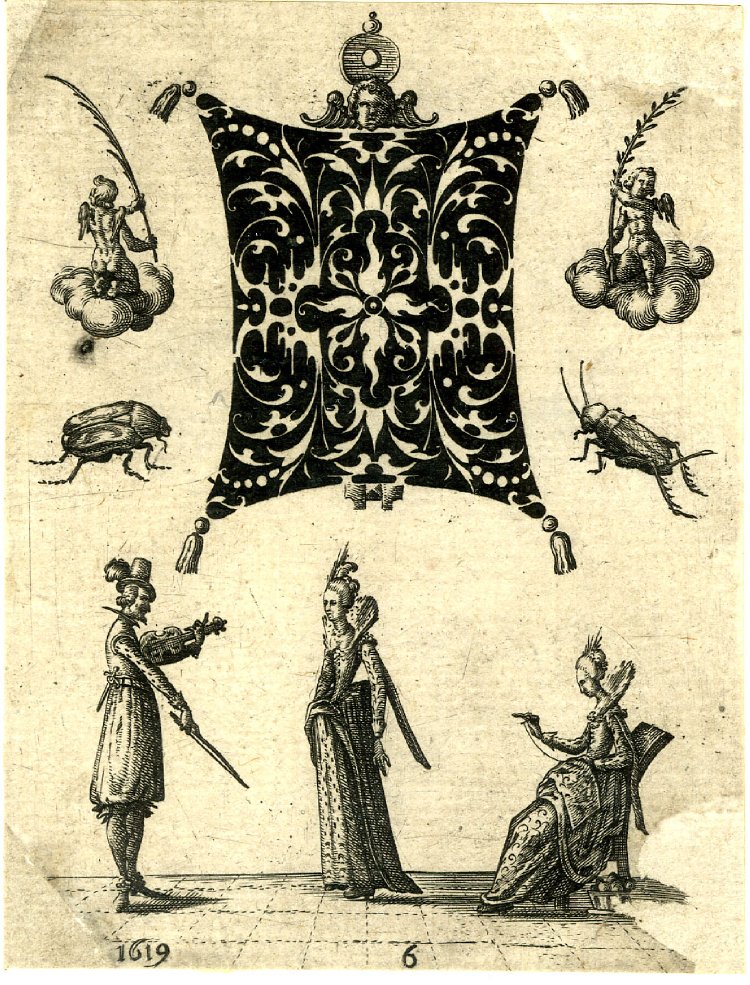
This image and the two below are from a series of seven plates of jewellery designs surrounded by small scenes, published by Jean Toutin in Châteaudun, 1618/19. Toutin (d. 1644) was a goldsmith, enamellist and ornamental engraver.
Cushion-shaped design in blackwork with pea-pods (cosse de pois) surrounded by two putti, a beetle and a grasshopper, and a small scene with a violonist, a woman dancing, and another woman embroidering.
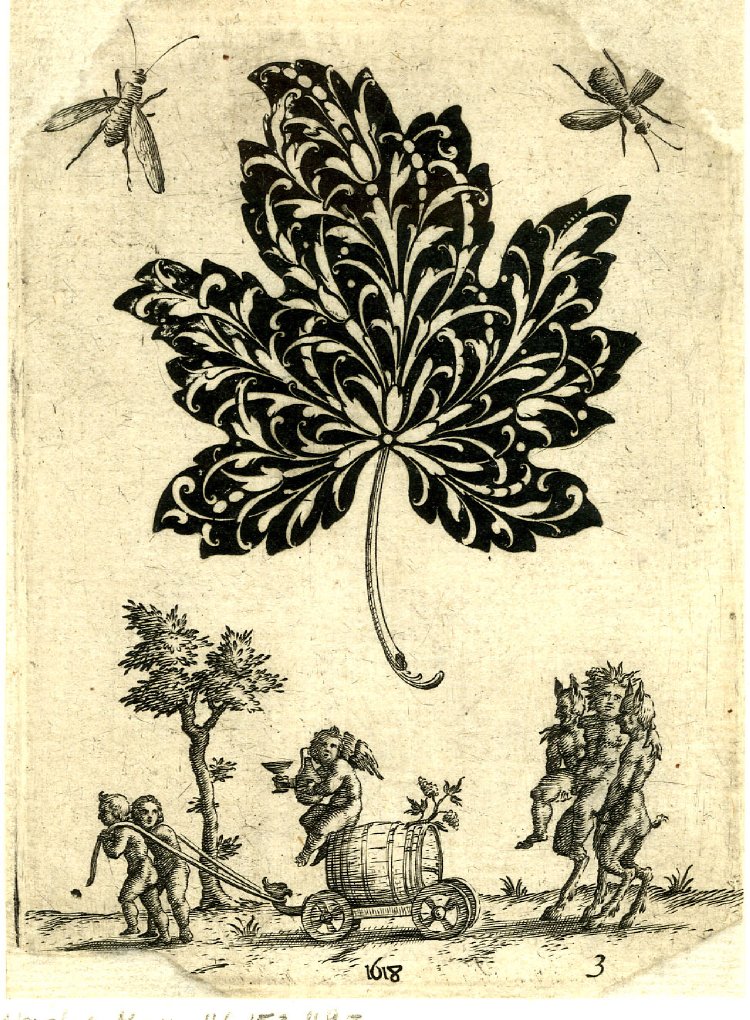
Leaf-shaped design in blackwork with pea-pods, and small scene representing the procession of Bacchus. 1618
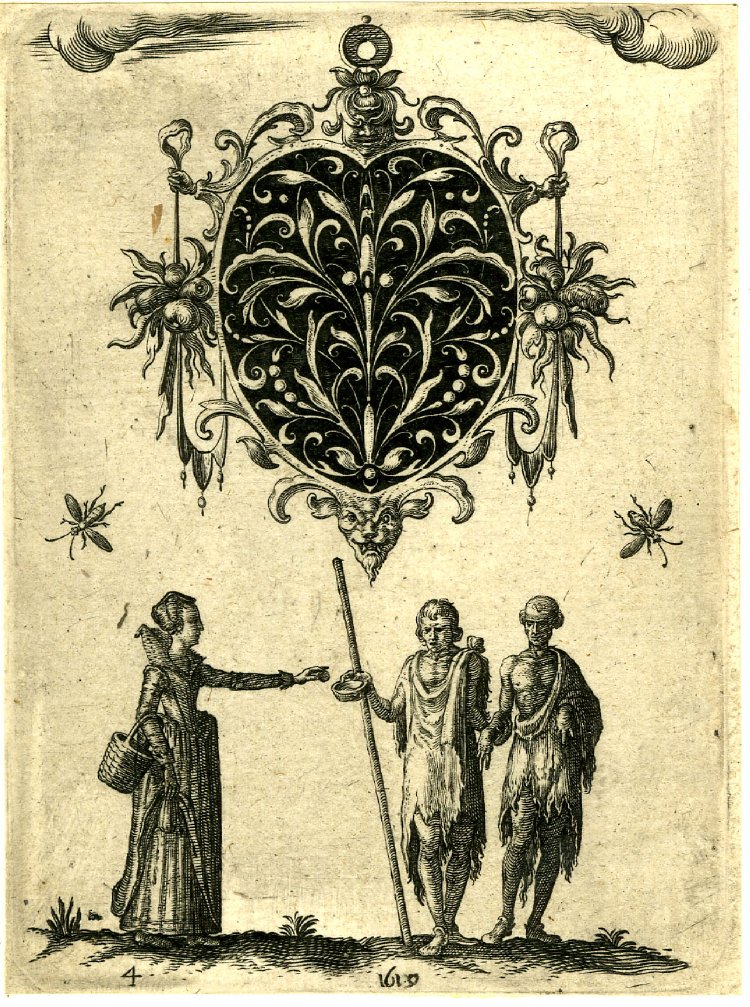
Heart shaped design for a medallion in blackwork with pea-pods, and a woman giving alms to two beggars
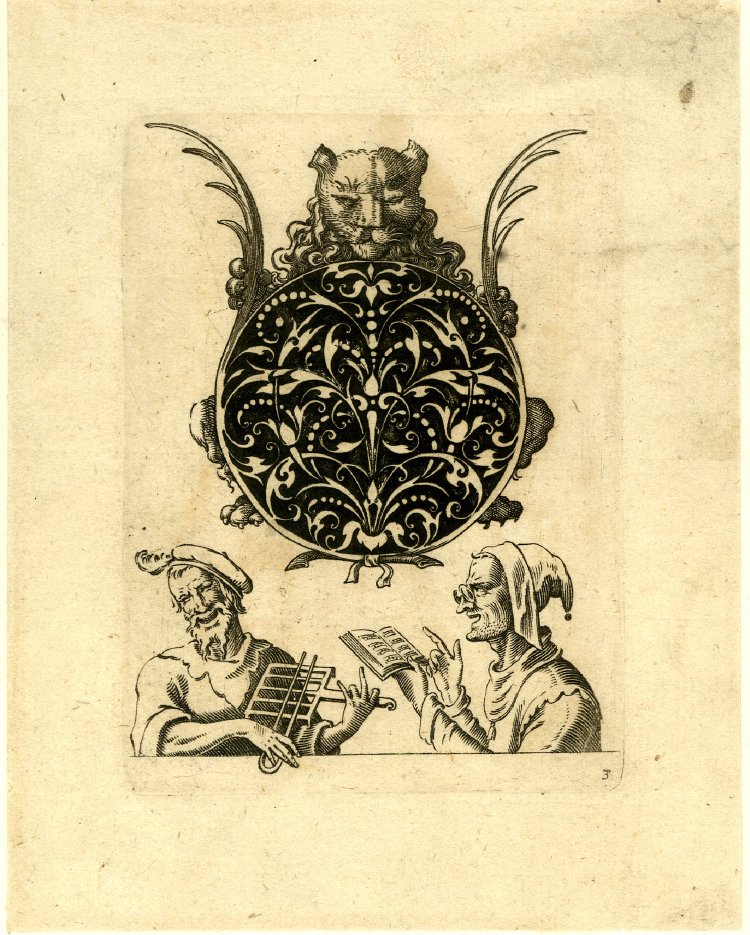
This print and the one below were made by Jakob von der Heyden, after designs by Jean Toutin.
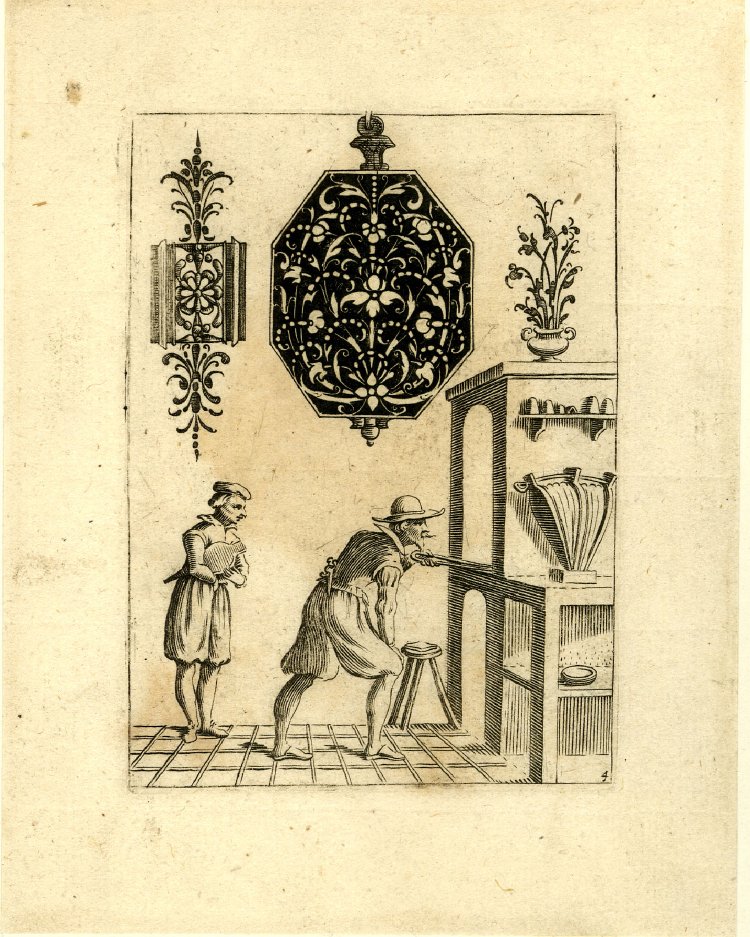
Heyden's 1630 suite of a dozen blackwork plates reverse copied a selection from two series of prints by Toutin (including the above examples from one set) published in 1618/1619.
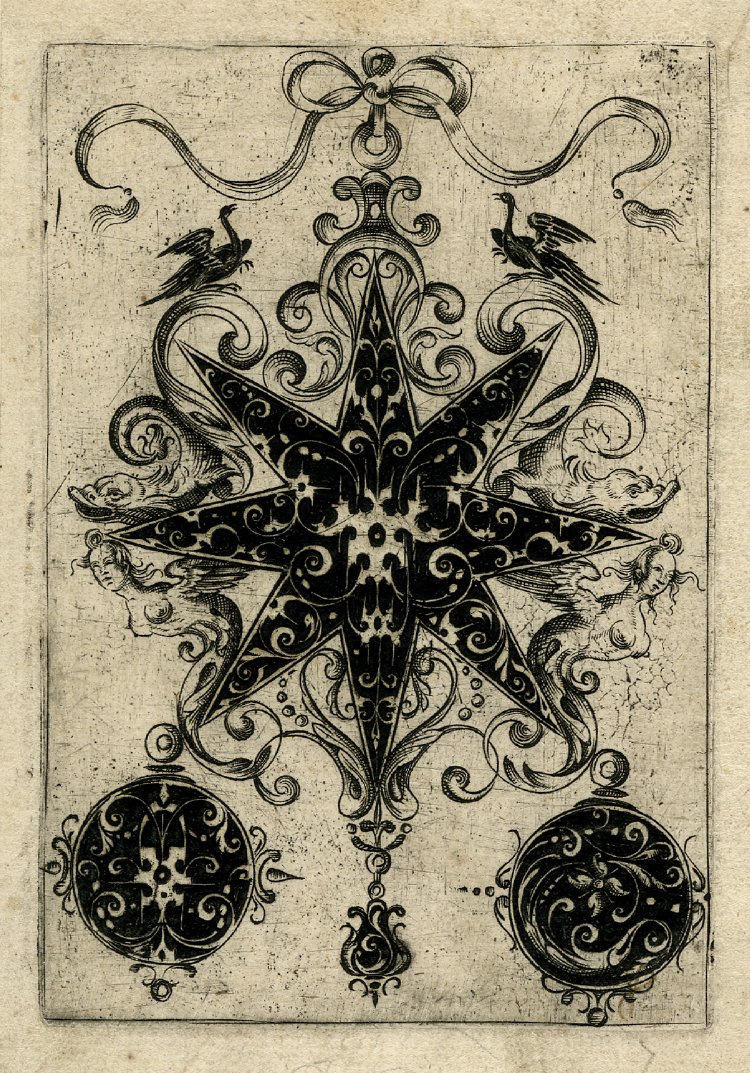
This is one of the less fanciful designs by Corwinian (Corvinian) Saur, who was influenced by the grotesques in mid-16th century books by the French architect, Jacques Androuet du Cerceau.

Anonymous roundel featuring arabesque foliage from about 1575. (Germany)
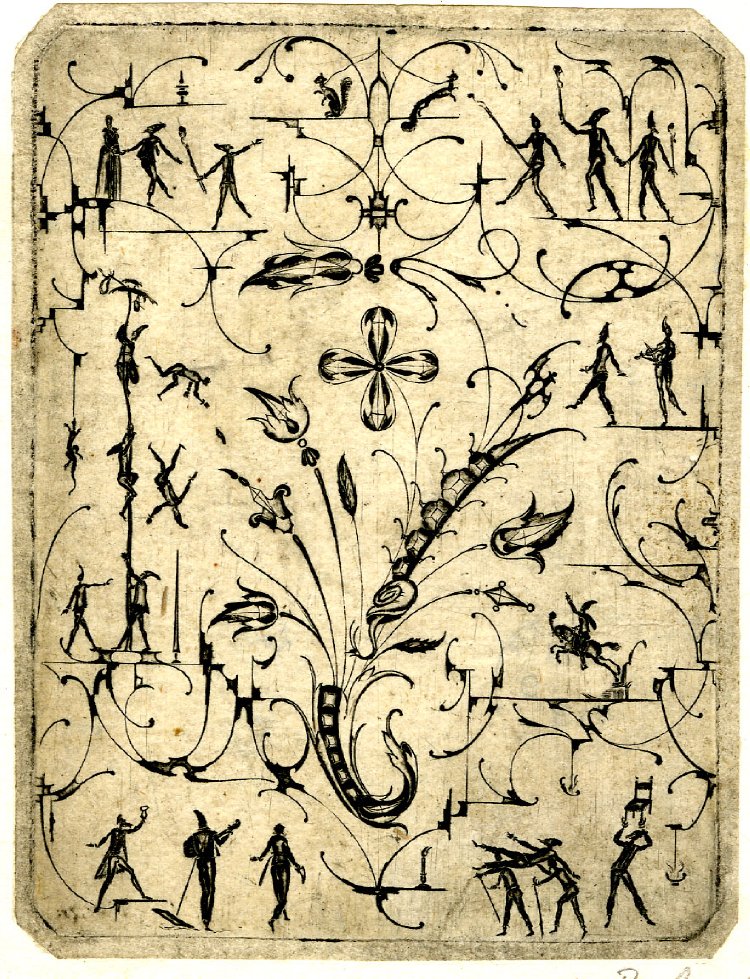
Grotesque panel, blackwork with small silhouetted figures, bandwork, foliage and flowers. Designed and engraved by Matthias Beutler (Beitler), 1600.
"..the print has an appearance of chinoiserie* avant la lettre*, similar to designs by Valentin Sezenius." [see last 2 images below]
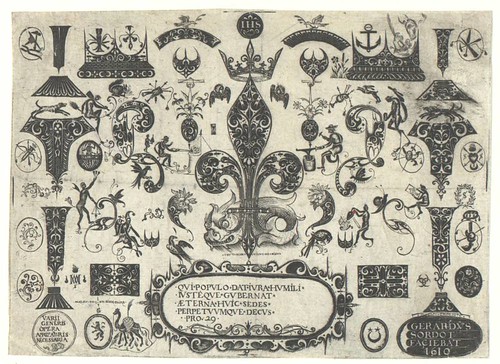
Blackwork engraving (1610) by Gérard Sordot of numerous ornaments and grotesque figures, entitled: 'Opera Varii Generis Aurifabris Necessaria'; confirming that the motifs were intended as designs for goldsmiths.

Print made by Heinrich Raab and published by Paulus Fürst in Nuremberg in 1648. The plate features five blackwork fillets from a suite of six design prints for goldsmiths and enamellers.

Heart-shaped blackwork ornament surmounted by a crown, dated 1617, by Ezajas von Hulsen (Esaias van Hulsen)

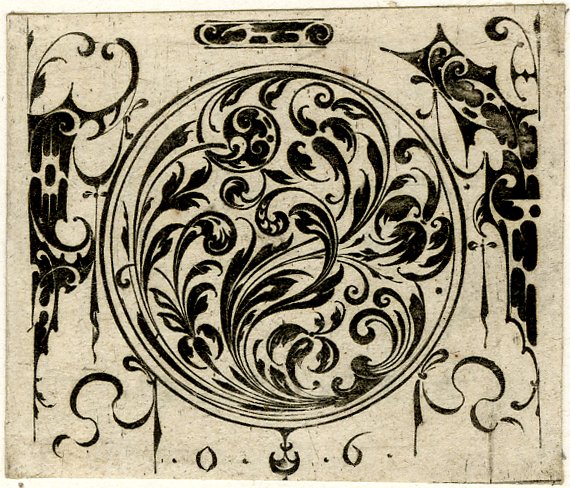
Lozenge and roundel blackwork designs by Michel Le Blon, 1605.
"Dutch ornamental and silver engraver, goldsmith, publisher and art agent active in Amsterdam, Antwerp and London; cousin of Joachim von Sandrart [..]; Theodor and Johannes de Bry were his masters; travelled to Italy, visiting Bologna, Florence and Rome and afterwards to London; died in Amsterdam in 1656."
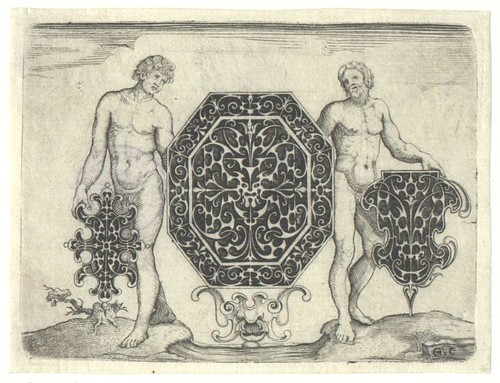
Goldsmith ornaments by Giovanni Battista Costantini, ~1610-1620. Costantini was one of only a couple of Italian artists to have taken up the technique of blackwork engraving, perhaps after seeing a suite of prints published in Rome by an itinerant Dutch goldsmith/printmaker.
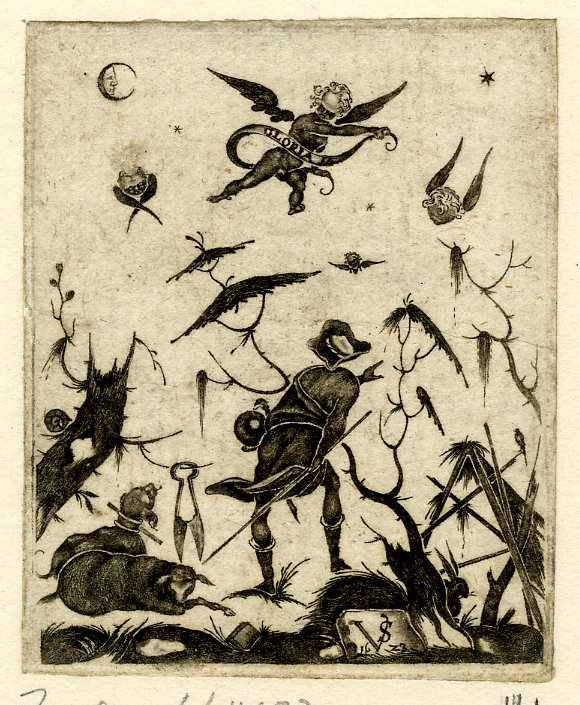
Print by Valentin Sezenius, 1623. The angel appearing to a shepherd; two

Print by Valentin Sezenius, 1624. Perseus and Andromeda, the latter chained to a rock, dragon in the sea to right; Perseus on flying pegasus arriving from the right; artist's monogram and date in a tablet hanging from the tree.
Ornamental engravings constitute a large and diverse body of prints in which decorative motifs for use by artists and craftsmen in fields such as book illustration, furniture making, architectural and jewellery design, for example, are recorded.
Blackwork prints are a very specific and limited group of ornamental engravings, exclusively providing enamelling designs for jewellery makers.
This type of print was produced in Northern Europe (mostly Germany and France) between about 1580 and 1630. The fairly obvious characteristic that identifies a blackwork engraving is the inclusion of solid areas of blackness, as opposed to a normal engraving in which the motif is formed by fine lines from a burin. But blackwork prints often incorporate elements engraved in the traditional way as well.
The variation in engraving technique almost certainly resulted from goldsmiths having taken up the art of printmaking. Examination of surviving copper plates shows that the surface cuts were likely produced by the same tools goldsmiths used to prepare precious metals to receive enamel. The blackwork engraving on the harder copper metal was undoubtedly a laborious process, restricting its use to goldsmiths familiar with the trade tools. The quality of the prints varied too, as a thicker ink was required to adhere to the wider gouged impressions in the copper.
Prints in blackwork customarily feature one or more of three recurrent types or styles of ornament:
1. Schweifwerk (tail-work) -- a combination of scroll-work, strap-work and an all-over arabesque pattern, suggesting a mixed stylistic heritage
2. Foliated scrolls -- these lack the interlacing of the arabesque and more closely resemble the classical acanthus ornament or rinceaux.
3. The grotesque -- the monstrous and fairy creatures, trophies, abstracted birds and insects etc.
The odd, somewhat geometrical, shapes in some of the above images represent specific elements of decoration for (most usually) rings and pendants, including ring shoulders and hoops, bezels, frame scroll-work and claw-stone settings. Prints were often embellished with naturalistic scenes (these were ultimately dominating features in later prints), in addition to the enamelling designs, both to animate the composition and perhaps, too, as a means of making the work more attractive when artisans showcased their portfolio for potential customers. In fact, printmaking by jewellers was, for instance, a means by which itinerant workers might find employment as they travelled around, because some cities' guilds restricted the numbers of tradesmen who were allowed to work as jewellers.
Blackwork engraving had all but died out by the late 1620s, ostensibly as a result of a change in jewellery fashion. Painted enamel decoration superseded inlaid enamel and design prints could be produced by regular engraving more easily. Stone cutting techniques also improved, shifting the decorative emphasis from enamels to clear, cut stones in less ostentatious settings.
My curiosity about blackwork prints was originally piqued by some of the highly detailed sword hilt designs that featured here a couple of months ago.
- The vast majority of the images above are from the British Museum Prints Database - search on 'blackwork'.
- All of the BM blackwork prints plus many, many more can be found in the Ornamental Prints site - search on 'schwarzornament' and choose the MAK results in the sidebar (the others are only viewable as thumbnails).
The authority on which this entry heavily relies is:
Robyn Christie: 'Blackwork Prints, Designs for Enamelling', Print Quarterly V (1988), pp.4-20. (not online; or at least it might be, if you pay). It's an excellent and very very detailed article. I'm sure I've left LOTS out in this minimalist précis above. [I've saved a few more images in this set]
Thanks very much Karla! Thanks also to the helpful responders when I was unsure what I had found & what I was doing: @caroleagent / @museoimaginario / @PrintShip / @cragridge / @vacapinta
Elsewhere: **twitter/index/bookmarks/feeds/book**




No comments:
Post a Comment